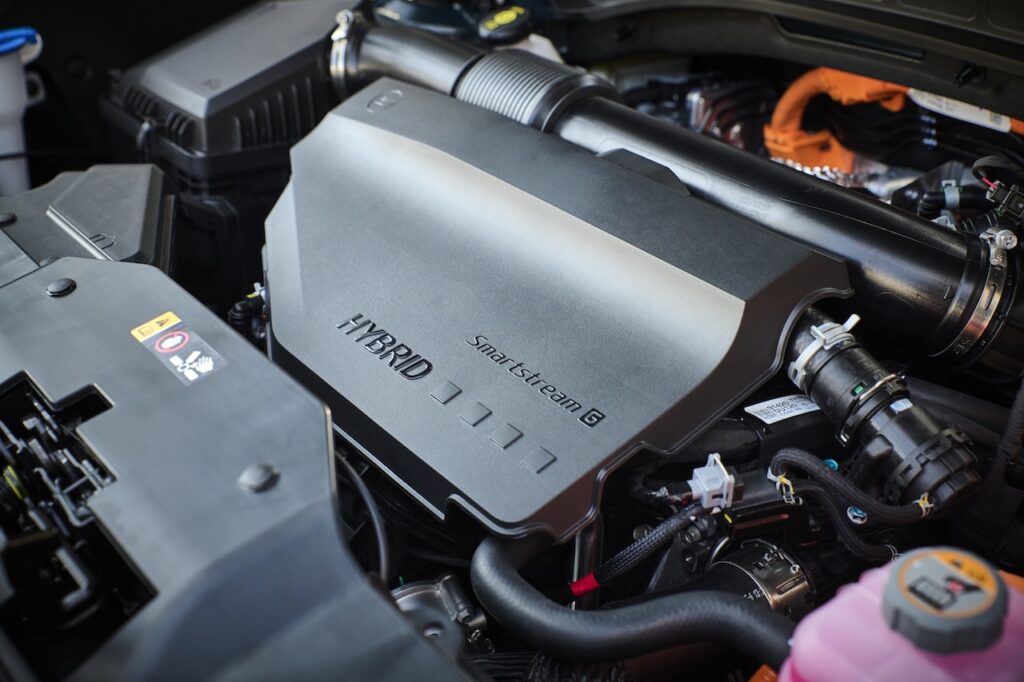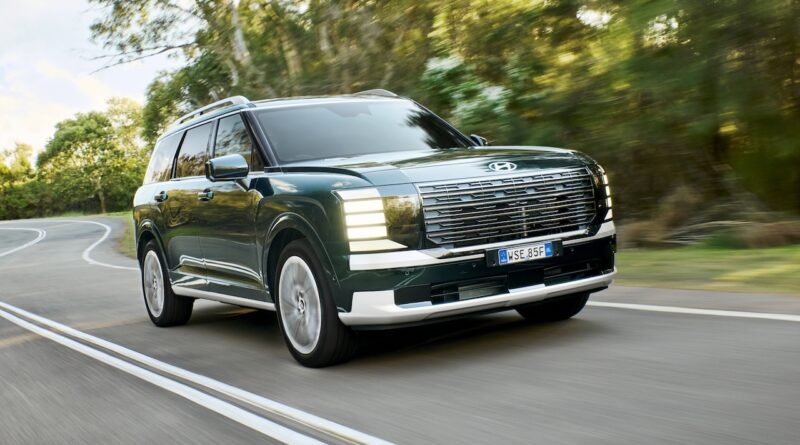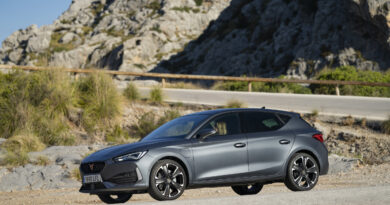2026 Hyundai Palisade Calligraphy HEV Review: Can Hyundai’s new hybrid system really turn this huge SUV into a fuel-miser? Corby is sceptical
Truly, you don’t need to dive into the demographics or scrape through the sales figures to know that sentiment is shifting towards electric vehicles, you just need to see how car companies are marketing their wares.
In the modern showroom it seems clear that every brand wants to have as many cars with “EV” in the title as possible. For NVES mandatory CO2 reduction reasons, a pure EV is best, but when it comes to mass adoption – also known as maximum sales – a PHEV is currently arguably better.
But if they can’t manage that, a company like Hyundai will hit you with a HEV, Hybrid Electric Vehicle.
At least it’s got those two letters in it, even if – in the real world with seven or eight humans on board – I doubt the new Hyundai Palisade HEV is ever going to get within a bull’s roar of its claimed 6.8 litres per 100km.
READ MORE: Hyundai electrified ute accelerates: “Mind blowing” range extender to take on BYD Shark 6 by 2028
READ MORE: China-sourced Hyundai Elexio confirmed for Australia in early 2026. Is this the only way to challenge Chinese brands?
READ MORE: All-new flagship Hyundai Palisade SUV switches to hybrid power: New drivetrain also expected to land in Kia Tasman ute
That is the kind of wish casting, magic realism fuel efficiency its clever hybrid system – featuring a four-cylinder engine and not one but two electric motors – is supposed to deliver.

2026 Hyundai Palisade Calligraphy HEV price and equipment
There was a time when the idea of charging $89,990 plus on-road costs for a car with a Hyundai badge would have seemed absurd. Indeed, I just checked and it was yesterday, so perhaps we should still be shocked by this.
The last Palisade was available with either a four-cylinder diesel engine or a six-cylinder petrol one, and the very cheapest version was just $66,800.
The new one, thus far, comes in just one more pricey variant with all the fruit – the Calligraphy – and offers a brand new hybrid powertrain with a 2.5-litre four cylinder engine and two electric motors for a combined 245kW and 460Nm.
Those numbers make it Hyundai’s most powerful hybrid yet, but despite those impressive (and necessary, to haul this much metal) numbers, it’s also claiming a fuel-economy figure of 6.8 litres per 100km (on the cheapest 91 RON fuel), which is better than even the 7.3L/100km for the now-defunct diesel (and good riddance to any diesels, I say) and much improved on the 10.7L/100km for the outgoing petrol V6.
Why does it need two electric motors? Well, it’s not just to confuse people, but it’s not purely for more power and performance, either, because one of them helps to power the front wheels while the other is dedicated to energy recuperation.
Make no mistake as Hyundai’s first new-gen hybrid this is an important engine that is going to pop up[ in all sorts of places across the giant Korean auto group, including – we expect – the Kia Tasman ute.
Anyway, back to its place under the Palisade’s long bonnet. The overall goal is to provide an economical giant SUV that can still go up hills without crying, wheezing or just giving up.
As you’d expect, being the high-spec version (a cheaper, entry-level version will surely arrive at some point), the Palisade Calligraphy HEV comes with all the bells and whistles, and altogether too many bells and whistles when it comes to intrusive safety systems.

2026 Hyundai Palisade Calligraphy HEV: What we think
Hyundai says that it is very happy with the distinct design differences between this huge and hugely American-looking SUV, with its bluff and brutal front end, and the more edgy and interesting looking Santa Fe that sits just beneath it in terms of size, and price.
Its people describe the Palisade – available with either seven or eight seats, and properly spacious (it’s bigger in every dimension than the car it replaces) – as “commanding” while the Santa Fe is “youthful”. So “commanding” could just mean “old”.
It’s not to my taste, and I’d go the youthful option, but if you like American things, like GMC trucks, you’ll love it.
Inside, once again, it’s just not quite as nice, or modern, as the Santa Fe. A lot of the materials look good, and premium, at first, but then you touch them and it’s all a bit harder and more plasticated inside than you expect. It’s not awful, it just doesn’t feel as expensive as its aura suggests.

Where you can feel like you’re getting your $89,990 worth is in the way it drives, because this Palisade belies its size, and Yankee Doodle looks, to ride like a properly sorted vehicle.
Hyundai says it’s done a lot of local tuning for Australian conditions and we were allowed to drive it on some properly rough and challenging roads, and a bit of dirt and gravel, and it really does ride, and behave, like a six-figure-plus priced European vehicle.
NVH (noise, vibration and harshness) is good, the steering is reasonably communicative and you can throw it at a series of bends without becoming motion sick.
If you didn’t know it was a four-cylinder, you could almost be talked into believing that there’s something bigger under that enormous bonnet because it really does feel like it’s powerful enough for most people’s tastes.
It’s a huge SUV, a mover of many people, so it’s never going to be a sporty machine, but it fulfils the brief amply.
2026 Hyundai Palisade Calligraphy HEV: Verdict
I don’t want to be entirely cynical, and I’m sure the electric motors will help, and even more so in slow moving city traffic, but I just don’t buy that this enormous Palisade is going to deliver 6.8 litres per 100km.
Indeed, it might be well north of 10L/100km if you’re going to use it in the way its makers intended.
But what his Palisade Calligraphy HEV is really delivering on is offering motorists who need, or desire, a massive SUV the ability to tell themselves, and their neighbours, that they kinda, sorta bought an EV, or at least a vehicle featuring those letters.

SCORE: 3.5/5
2026 Hyundai Palisade Calligraphy HEV specifications
Price: $89,990 (plus on-road costs)
Basics: HEV, 7 or 8 seats, 5 doors, large SUV, AWD
Fuel use: 6.8L/100km (ADR)
Battery capacity: 1.65kWh
Drivtrain: 2.5-litre four-cylinder turbo-petrol and two electric motors, 245kW/460Nm combined output
AC charging: NA
DC charging: NA
0-100km/h: NA






Spot on with this write-up, I really believe that
this website needs far more attention. I’ll probably be back again to read more, thanks for the info!
I might have read that wrong, I thought you were saying we needed to fix the site, but now I see it’s a compliment, so to you I say thank you for your attention.